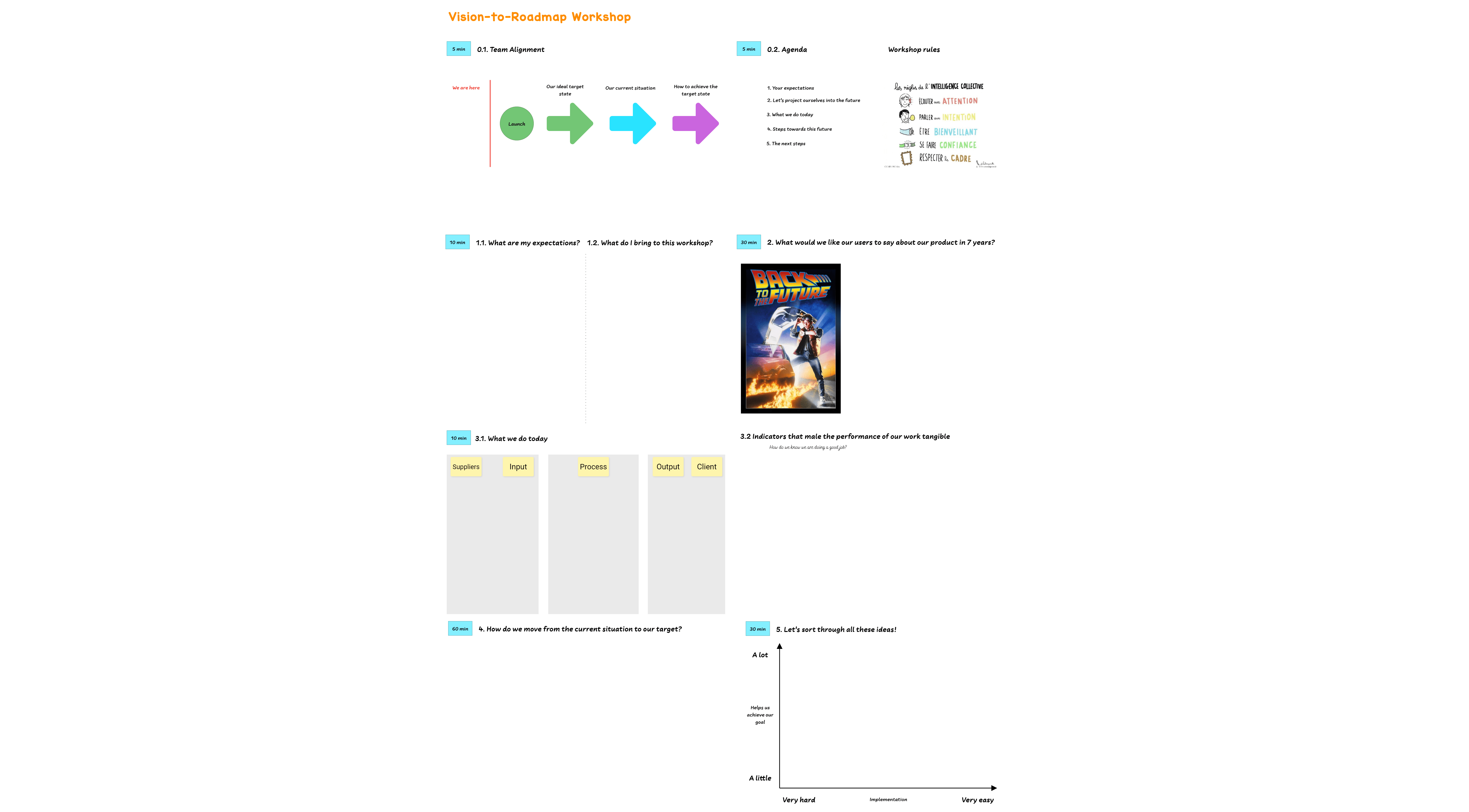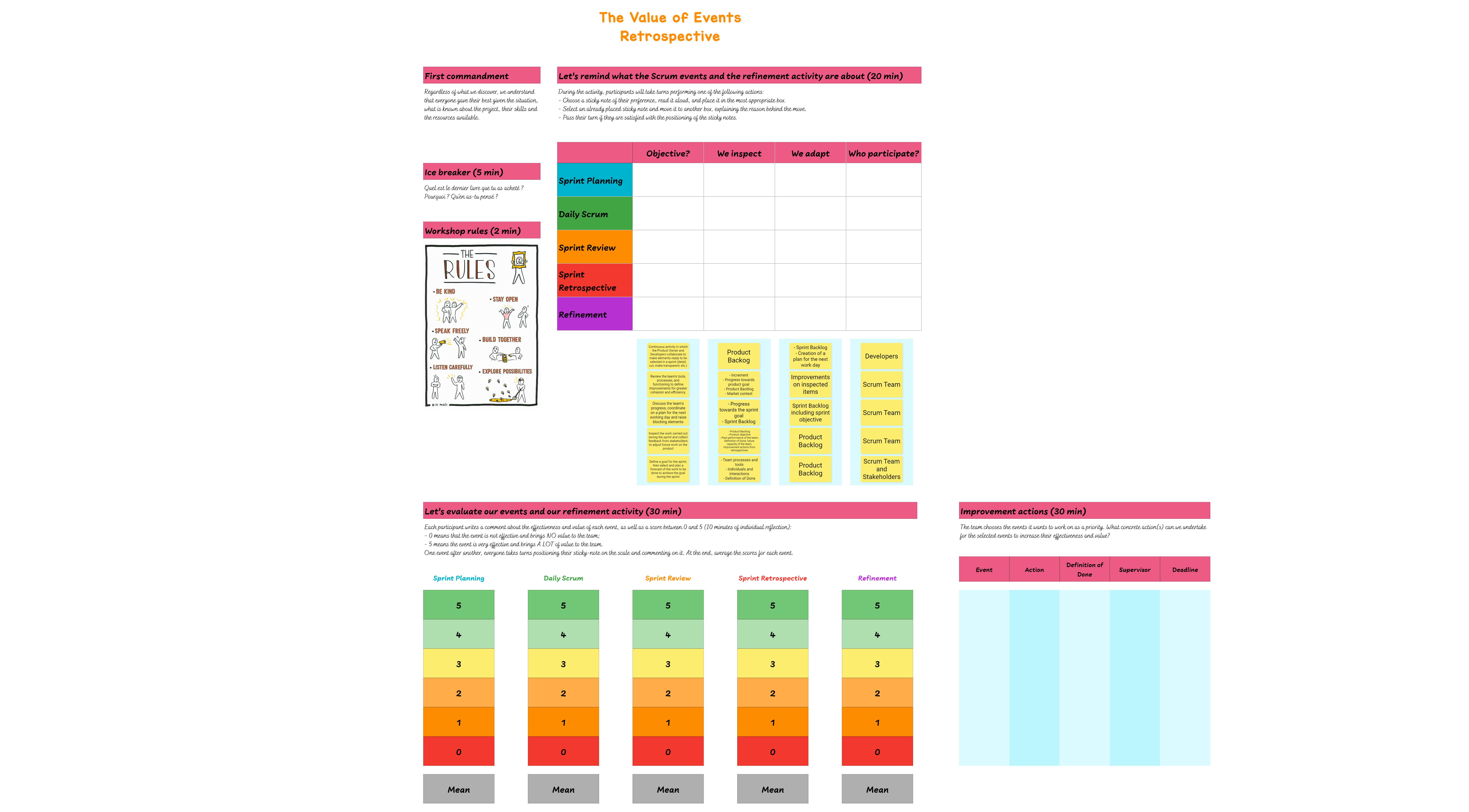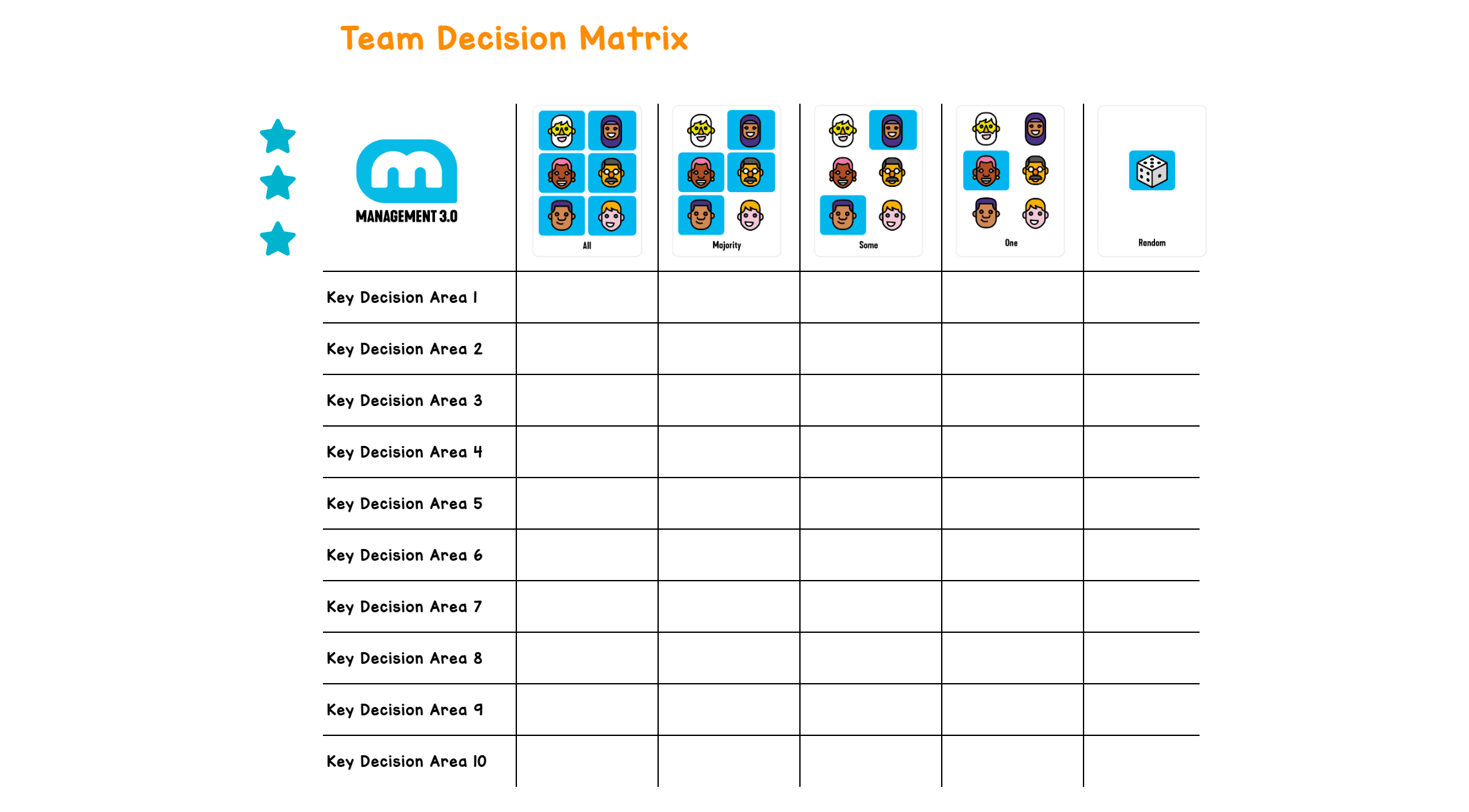Description of the workshop
The Vision-to-Roadmap Workshop is a tool that helps teams envision the future of a project, initiative, or product. It enables them to define their purpose and desired changes and consider various strategies to achieve their goals. This workshop encourages teams to think ahead and plan for success.
It is generally believed that short-term strategies are more reliable than long-term ones. The further you project into the future, the less certain you can be about the results. It is important to define your long-term strategy, but not to become too attached to it. This work can be useful in the future, but it is also important to remain flexible and adaptable to changing circumstances.
When to use this workshop?
Are you facing a situation where your team seems to be lost and unable to prioritize their next steps? This can happen in several scenarios such as:
- When a team is newly formed,
- After completing a major project,
- During long routine periods, or
- When there are conflicts in prioritization and that technical solutions proposed by team members are completely different.
Duration of the workshop
Depending on the number of people and the extent of the subjects to be covered, the workshop can be shorter or longer, or it can be divided into multiple sessions. Here we assume that consensus is almost established and the main goal of the workshop is to bring it to the forefront.
Advice
It's important not to strive for perfection, but rather to focus on what is necessary to take the next step. You'll have the opportunity to refine and revise your assumptions later on.
Since we cannot predict the future, these workshops are designed to help you formulate wishes and hypotheses. It's highly recommended to review the results based on reality once they are available! 🙂
How to run the Vision-to-Roadmap Workshop
The workshop takes place in 7 stages:
Step 0: Introduce the workshop and remind the rules
During the preliminary stage, the facilitator presents the objectives, intentions, and agenda of the workshop. They also suggest to the group a set of rules to be respected during the collective intelligence workshop. These rules include listening attentively, speaking with intention, being kind, trusting one another, and respecting the framework.
Step 1: Involve participants in the construction of the vision
During step 1, participants are asked to share their expectations for the workshop and what they can contribute to the discussion and vision building.
Step 2: Project yourselves into the future
During the project, participants are asked to imagine the world after the project is completed and the product has successfully provided its full value. They are encouraged to consider what customers, users, suppliers, and other stakeholders (public organizations, unions, etc.) have to say about the product. If customers say "It's great," participants are asked to find out why and what differences the product has made in their lives.
In terms of the projection exercise, the participants can define the time horizon. They can decide whether the horizon would make sense in 1 year, 3 years, or 7 years.
It is also important that participants consider how achieving the vision can impact them on a personal level. They can think about developing new skills, expanding their career, creating new opportunities, and other relevant aspects.
The facilitator should look for observable facts, figures, behaviors, verbatim, and other elements that will allow the group to share a common, concrete, and unambiguous final film scene.
As the characteristics of this desired future emerge, participants can group them by theme or category, such as performance, opening of service to customers, and so on.
Step 3 [optional]: Describe the current situation
Step 3 in the process is not mandatory. You can opt for it if you believe it would help the team develop a shared understanding of the current situation. This step can also be beneficial in case of a team merger or when new members join the team.
The SIPOC (Suppliers, Inputs, Processes, Outputs, and Customers) tool is a Lean tool that enables you to describe a high-level production process. It is up to you to determine whether the process mapping could be advantageous for the team and prepare for the next step accordingly.
There are other tools available that can help visualize the situation, such as constructing a metaphor. Use the tool that you find most appropriate.
Step 4: Determine possible strategies to achieve the desired future
During the next step, all participants will collaborate and generate a list of potential strategies to achieve the target state. These strategies can be focused either globally, thematically, or both. The intermediate strategic results will be discussed in small groups and shared with all participants. These results will serve as potential elements of the roadmap and will undergo prioritization work.
Step 5: Prioritize the results you want to achieve
The facilitator asks participants to sort intermediate strategic proposals based on ease of implementation and impact on objectives.
Positioning elements relatively to each other can aid in sorting proposals. Typically, we begin by prioritizing proposals that are impactful and easy to execute.
After performing this exercise multiple times, it may become challenging to identify easy and impactful items. In such cases, it can be helpful to use other prioritization methods, such as impact mapping or dependency mapping. The team should focus on prioritizing items that have dependencies on many other subjects. In summary, proper prioritization is crucial.
Moreover, it is essential to avoid the mistake of describing solutions or actions. Instead, concentrate on outlining the results that you aim to achieve.
Step 6: Build a timeline
Start by identifying dependencies to position strategic outcomes over time. With an established track record, propose timelines for achieving results.
Step 7: Closing
During the final step of the workshop, the facilitator encourages participants to voice any lingering concerns they may have about the outcome. This is the time when team members agree on a shared goal that holds significance for everyone involved, including their individual careers. Typically, this is also when they commit to regularly reviewing and revisiting this objective.






